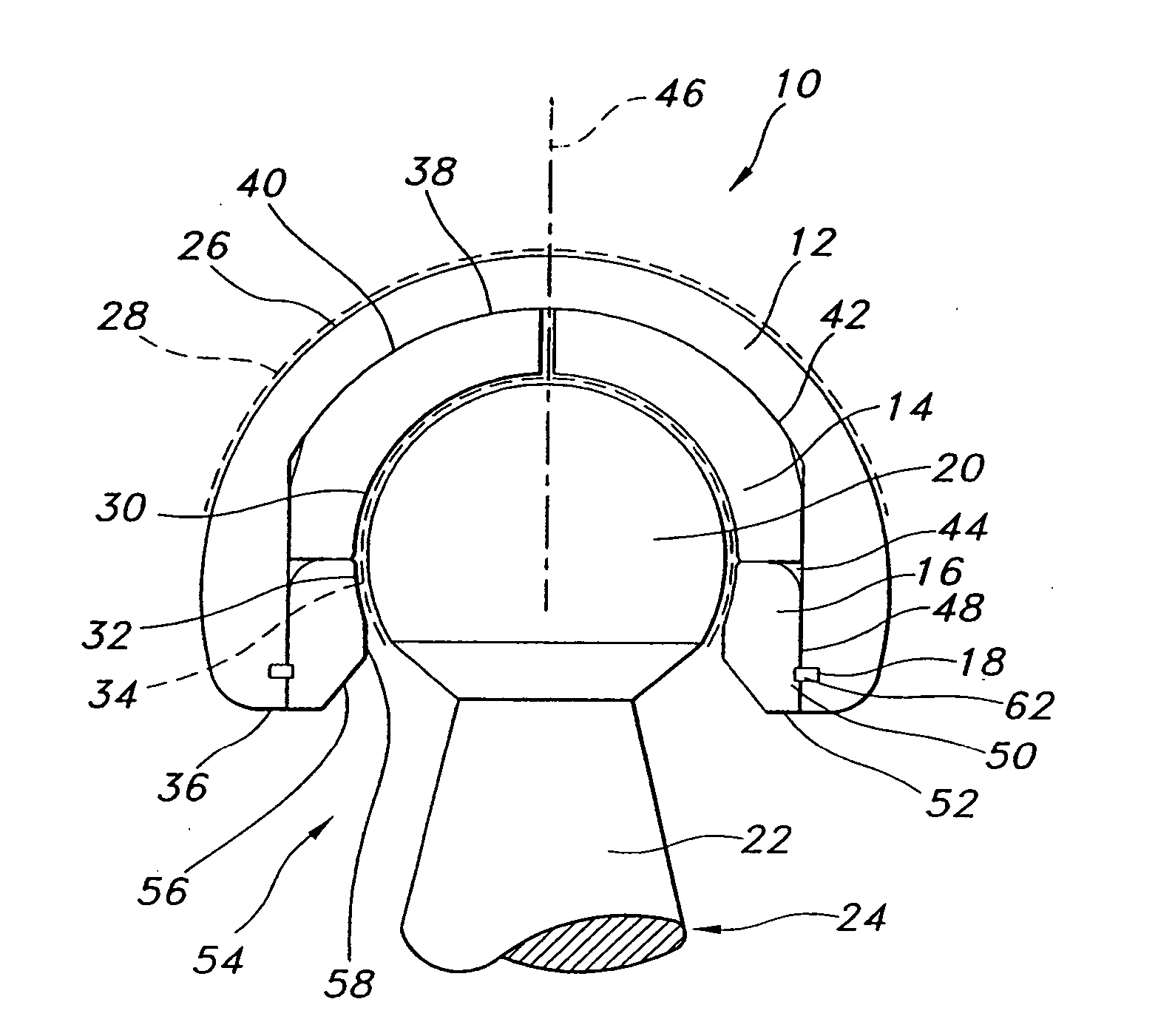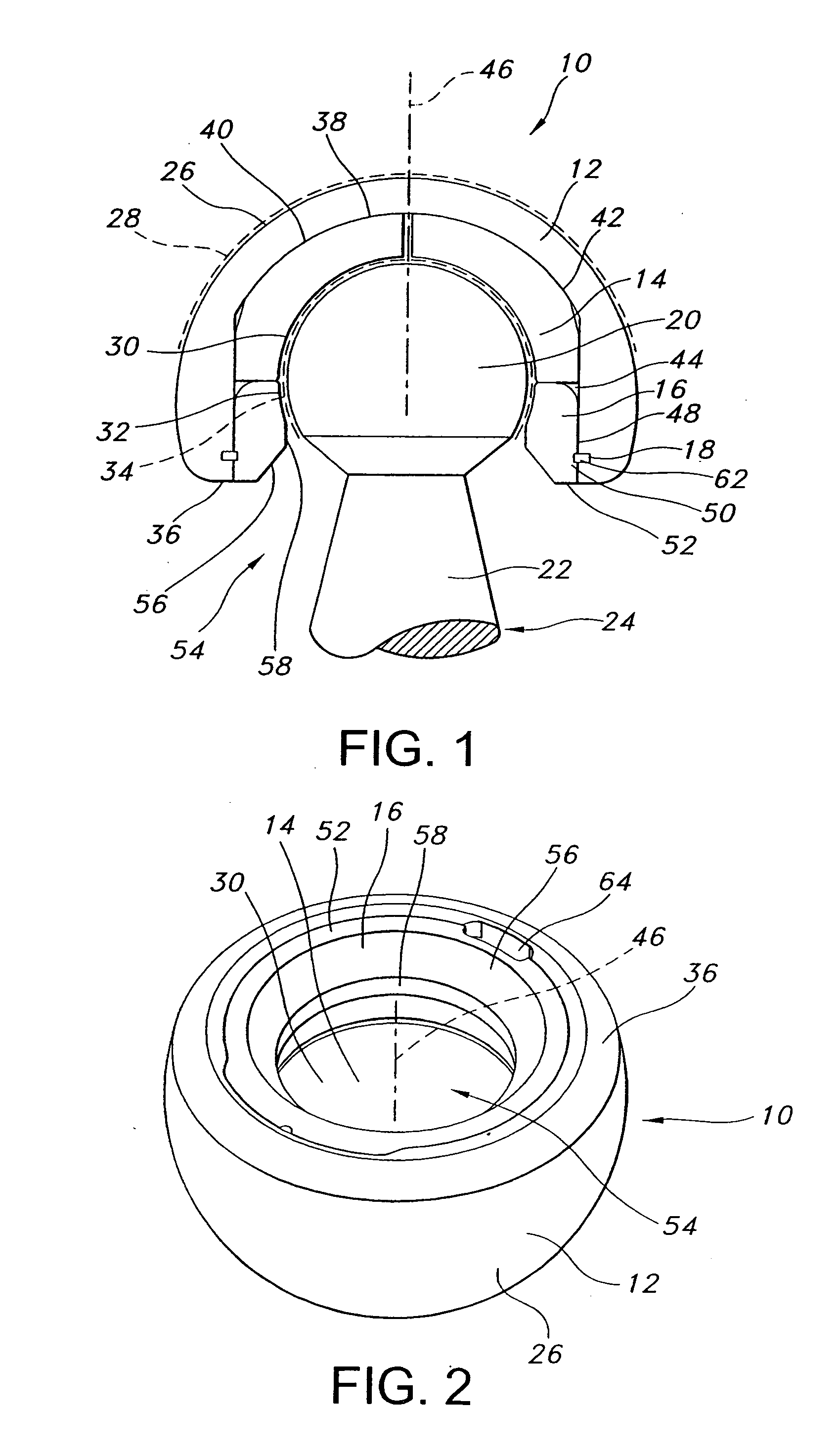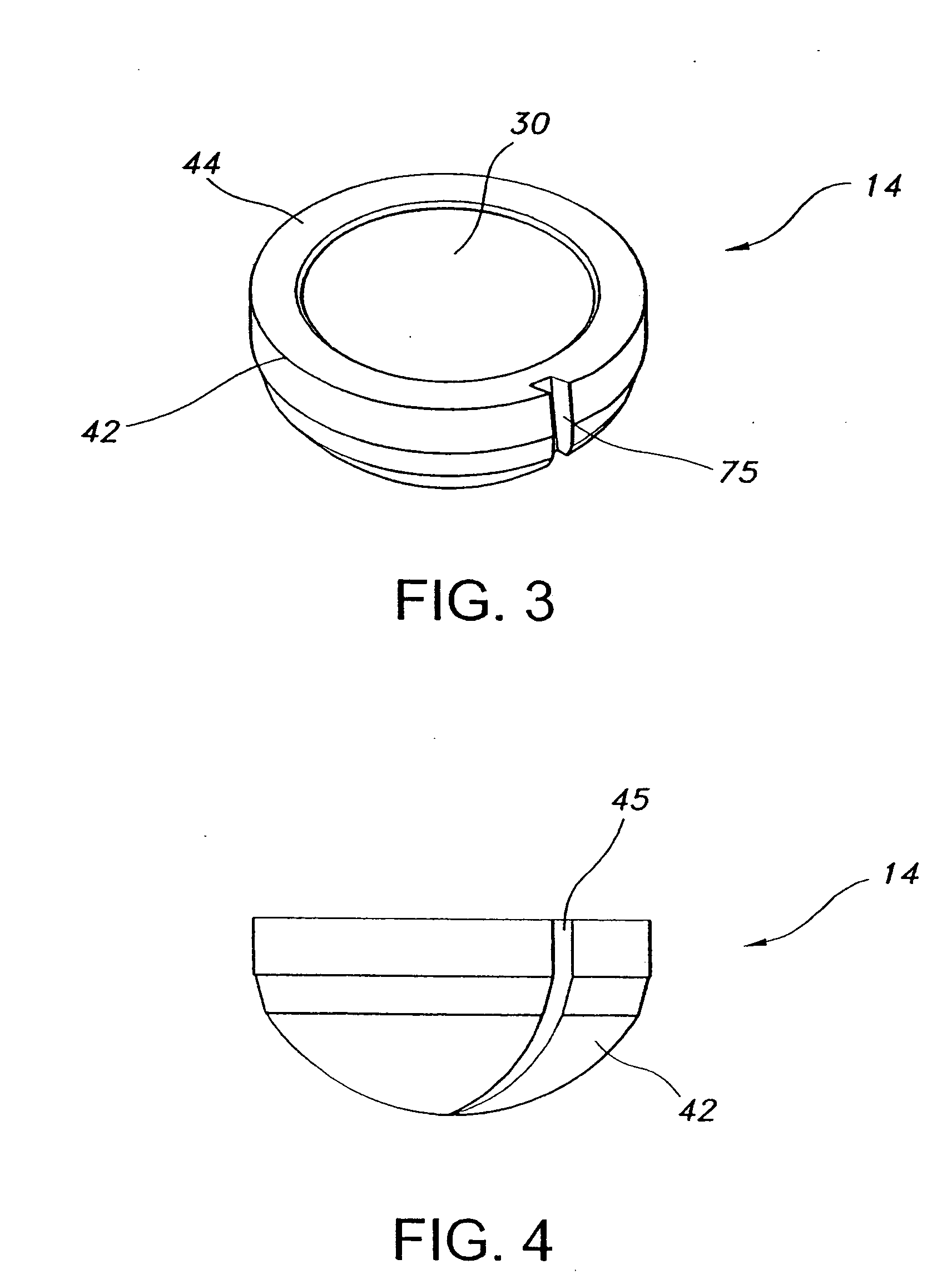Hip prostheses
a technology for prostheses and hips, applied in the field of hip prostheses, can solve the problems of dislocation problems, polyethylene wear, and exacerbated dislocation problems, and achieve the effects of reducing polyethylene wear, reducing or preventing dislocation of the femoral stem head, and increasing or at least not compromising the ability of the shell/liner
- Summary
- Abstract
- Description
- Claims
- Application Information
AI Technical Summary
Benefits of technology
Problems solved by technology
Method used
Image
Examples
Embodiment Construction
a. Particular Bipolar Prosthetic Structures for Improving Material Wear and Dislocation Properties.
[0035]FIG. 1 is a cross-sectional view showing a preferred embodiment of a bipolar prosthesis 10 according to certain aspects of the present invention. Prosthesis 10 generally includes a shell 12 which receives a liner 14 and a locking ring 16 which may be held in place by a retainer 18. The prosthesis 10 is adapted to fit within and articulate, or fit in an articulating relationship with, the acetabulum. “Articulating relationship” means a physical relationship that allows relative motion or movement between two components of a prosthesis in a manner that corresponds to motion or movement of two body parts relative to each other, such as bone structure on opposing sides of a joint such as an ankle, knee, hip, wrist, elbow or shoulder. For instance, prosthesis 10 and a femoral stem it accommodates are connected in an articulating relationship, while the liner fixed within the prosthe...
PUM
| Property | Measurement | Unit |
|---|---|---|
| wear resistance | aaaaa | aaaaa |
| diameter | aaaaa | aaaaa |
| strength properties | aaaaa | aaaaa |
Abstract
Description
Claims
Application Information
 Login to View More
Login to View More - R&D
- Intellectual Property
- Life Sciences
- Materials
- Tech Scout
- Unparalleled Data Quality
- Higher Quality Content
- 60% Fewer Hallucinations
Browse by: Latest US Patents, China's latest patents, Technical Efficacy Thesaurus, Application Domain, Technology Topic, Popular Technical Reports.
© 2025 PatSnap. All rights reserved.Legal|Privacy policy|Modern Slavery Act Transparency Statement|Sitemap|About US| Contact US: help@patsnap.com



